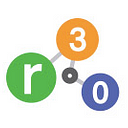By Bill Baue & Ralph Thurm
What does Stakeholder Capitalism — all the rage since the 2019 Business Roundtable (BRT) Statement committing to prioritize all stakeholders (instead of just shareholders) — look like in practice?
One thing it could look like is this: when stakeholders ask for information substantiating claims that company actions do, in fact, prioritize stakeholders, companies could… provide this information through productive dialogue.
When presented this opportunity through a shareholder proposal seeking proof of stakeholder prioritization (amidst much counterevidence), BRT Statement signatories Bank of America, BlackRock, Citigroup, Goldman Sachs, and JPMorgan Chase opted instead for a stiff-arm response. Their lawyers asked the US Securities and Exchange Commission (SEC) for permission to omit these proposals from their proxy statements. The SEC denied the first four banks, forcing them to include the stakeholder requests on their proxies — and allowed the last bank to omit the proposal on technicalities.
The irony is thick: “No, stakeholders, we won’t show you how we prioritize stakeholders.”
This latest development affirms our recent Medium article, in which we questioned whether Stakeholder Capitalism is sufficiently transformative, or just “old wine in a new bottle.” And Stakeholder Capitalism is just one of many developments that we must assess to see if they are “fit-to-task” if we wish to survive and thrive as societies and civilizations.
To support such assessment, we at r3.0 are introducing a revamped version our Strategy Continuum (which we first unveiled in our 2017 Reporting Blueprint) that integrates our latest thinking.
The original consisted of a horizontal axis with a five-phase continuum (from Business-as-Usual to Improving to Sustaining to Regenerating to Thriving) from incremental to transformative strategies; and a vertical axis tracking movement from current economic system design to a new economy. Soon after introducing it, we tweaked it by adding a three-scale continuum on the vertical axis running from the Micro (organizational) level to the Meso (industry, portfolio, habitat) level to the Macro (economic, social, ecological systems) level.
Old r3.0 Strategy Continuum
Since then, based on our constant conversations with colleagues in our network, our thinking has continued to mature. Here’s what our new formulation looks like:
New r3.0 Maturation Matrix
Structurally, we made most changes on the vertical axis, where we added two levels: the nano (individual) level at the bottom and the supra (existential) level at the top. We’ve also re-labelled the horizontal axis: it now calls for “Scale-Linking,” or sync-up amongst the 5 levels, that leads to “Multi-Level Selection,” a concept from evolutionary biology that extends Darwinian natural selection beyond individual species to social groups. Distilled to its essence by E.O. Wilson and David Sloan Wilson (unrelated), it holds that
selfish individuals might out-compete altruists within groups, but internally altruistic groups out-compete selfish groups.
(Clearly, this approach aligns with r3.0’s stance as a pre-competitive initiative!) Think of it as a nested set of Russian matryoshka dolls, with the dolls going from genes to cells to the full organism, and then extending beyond the individual level to apply to groups (or “social organisms.”)
On the horizontal axis, we actually contracted from five to four phases by removing Sustaining as a distinct phase, and instead accentuating what the previous version only suggested: a binary distinction between Unsustainable and Sustainable performance and outcomes. Accordingly, we’ve nested the remaining four phase classification in two’s on either side of the dividing line (Degenerative and Improving on the Unsustainable side of the ledger; Regenerative and Thriveable on the Sustainable side.)
Finally, we relabelled Business-as-Usual, given the wealth of empirical evidence (Ecological Footprint, Planetary Boundaries, Doughnut, etc…) that the status quo is in fact Degenerative, underlining its positioning on the far end of the “unsustainable” continuum.
To illustrate how this matrix maps real-world practices, we plotted various different practices into the various cells.
As you can see, for example, Stakeholder Capitalism is slotted into the Improving Phase on the horizontal Sustainability Continuum, at the Macro (economic system) Level on the vertical Systemic Scale Continuum. This placement underlines that Stakeholder Capitalism is an improvement over Monocapitalism (and its Shareholder Primacy doctrine), but it falls short of actually achieving sustainability, as it does not attend to ecological or social thresholds — or the carrying capacities of the capitals embedded in Multicapitalism.
The underlying thinking is that we collectively need to mature from current practices — and currently incremental ambitions — to transform to new mindsets and paradigms that transcend the baseline of sustainability to achieve regeneration and thriveability. And this requires that we transform at each of the 5 scales as a means of triggering evolutionary “mutations” in adaptive capacity to align with living systems.
Given that this is a “first-draft” attempt to align practices into our Maturation Matrix, we invite you to tell us what you think about our placements.
- Do you agree?
- Disagree?
- Think we should move something somewhere else?
- Replace it with something else?
Please let us know by engaging with us in the Comments threads below, or respond to our posts on Twitter, Facebook, or LinkedIn.
